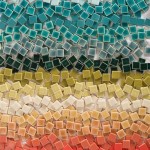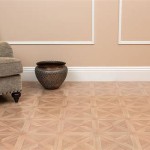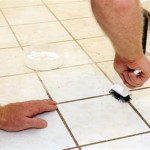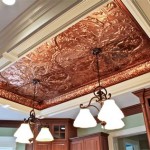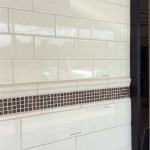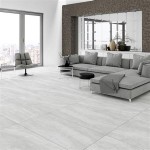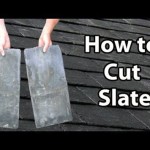What to Put Under Self-Adhesive Vinyl Tiles in Shower Floor
Installing self-adhesive vinyl tiles in a shower floor can be a great way to upgrade your bathroom's look without the hassle and expense of a complete remodel. However, to ensure a successful and long-lasting installation, it's crucial to consider the type of underlayment you'll use beneath the tiles.
Type of Shower Floor
The first step is to determine the type of shower floor you have. Self-adhesive vinyl tiles can be installed on various surfaces, including concrete, tile, and plywood.
- Concrete: Concrete floors are a common choice for shower floors, and they provide a solid base for vinyl tiles.
- Tile: If your shower floor is already tiled, you can install vinyl tiles over it as long as the surface is smooth and level.
- Plywood: Plywood is another suitable option for shower floors, but it must be sealed with a waterproof membrane to prevent moisture damage.
Underlayment Options
Once you know the type of shower floor you have, you can choose the appropriate underlayment:
- Self-Leveling Underlayment: If your shower floor is uneven, self-leveling underlayment can be applied to create a smooth, level surface for the vinyl tiles.
- Concrete Backer Board: Concrete backer board is a rigid material that can be installed over concrete or plywood floors. It provides a stable base for the vinyl tiles and helps prevent moisture damage.
- Waterproof Membrane: A waterproof membrane, such as a liquid applied membrane or sheet membrane, should be installed on plywood floors to prevent moisture from penetrating the subfloor.
Installation Tips
Before installing the vinyl tiles, make sure the underlayment is properly prepared:
- Clean the subfloor thoroughly to remove any dirt or debris.
- If using self-leveling underlayment, follow the manufacturer's instructions for mixing and applying the material.
- Install the concrete backer board or waterproof membrane according to the manufacturer's specifications.
Additional Considerations
In addition to the underlayment, consider the following factors when installing self-adhesive vinyl tiles in a shower floor:
- Grout Lines: If you're installing the vinyl tiles over an existing tiled floor, be sure to caulk the grout lines to prevent moisture from seeping through.
- Slope: The shower floor should have a slight slope to allow water to drain properly. This can be achieved by using a sloped underlayment or by installing the tiles with a slight slope.
- Anti-Slip Coating: For safety, consider applying an anti-slip coating to the vinyl tiles once they're installed.
By following these guidelines and choosing the right underlayment, you can ensure a successful installation of self-adhesive vinyl tiles in your shower floor, creating a beautiful and durable surface that will enhance your bathroom's appearance.

How To Cut In Self Adhesive Floor Tiles

Suitable Subfloors For Self Adhesive Vinyl Floor Tiles Planks Best Surface To Install L Stick

Vatican Tile Wall Stair Floor Self Adhesive Vinyl Stickers Kitchen Bathroom Backsplash Carrelage Decal L Stick Home Decor

Veelike Marble L And Stick Floor Tile 12 X12 Removable Self Adhesive Vinyl Flooring Waterproof Pack Grey White Tiles Stickers For Bedroom Bathroom Living Room Com

D C Fix Vivid Stars Self Adhesive Vinyl Floor Tiles Pack Of 11 1sqm Diy At B Q

Veelike L And Stick Floor Tiles 12 X12 4 Sq Ft Bathroom Vinyl Flooring Self Adhesive Waterproof Kitchen Stickers Removable Sheet Com
Can I Add L And Stick Tiles Over My Existing Ed Quora

Self Adhesive Vinyl Flooring Wall Stickers Tiles Waterproof L And Stick For Home Decor China Floor Bathroom Tile Made In Com

Self Adhesive Floor Tiles 13eur M2 Plastic Vinyl Kitchen Bathroom Tile Stickers Wood Look Stone Ornaments Flooring Diy New Zealand

Quality Self Adhesive Vinyl Floor Tiles Kitchen Bathroom Home Flooring Grey New
Related Posts

